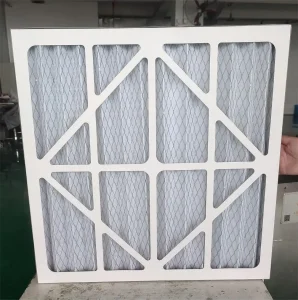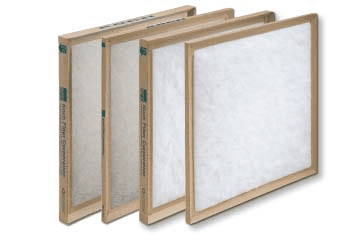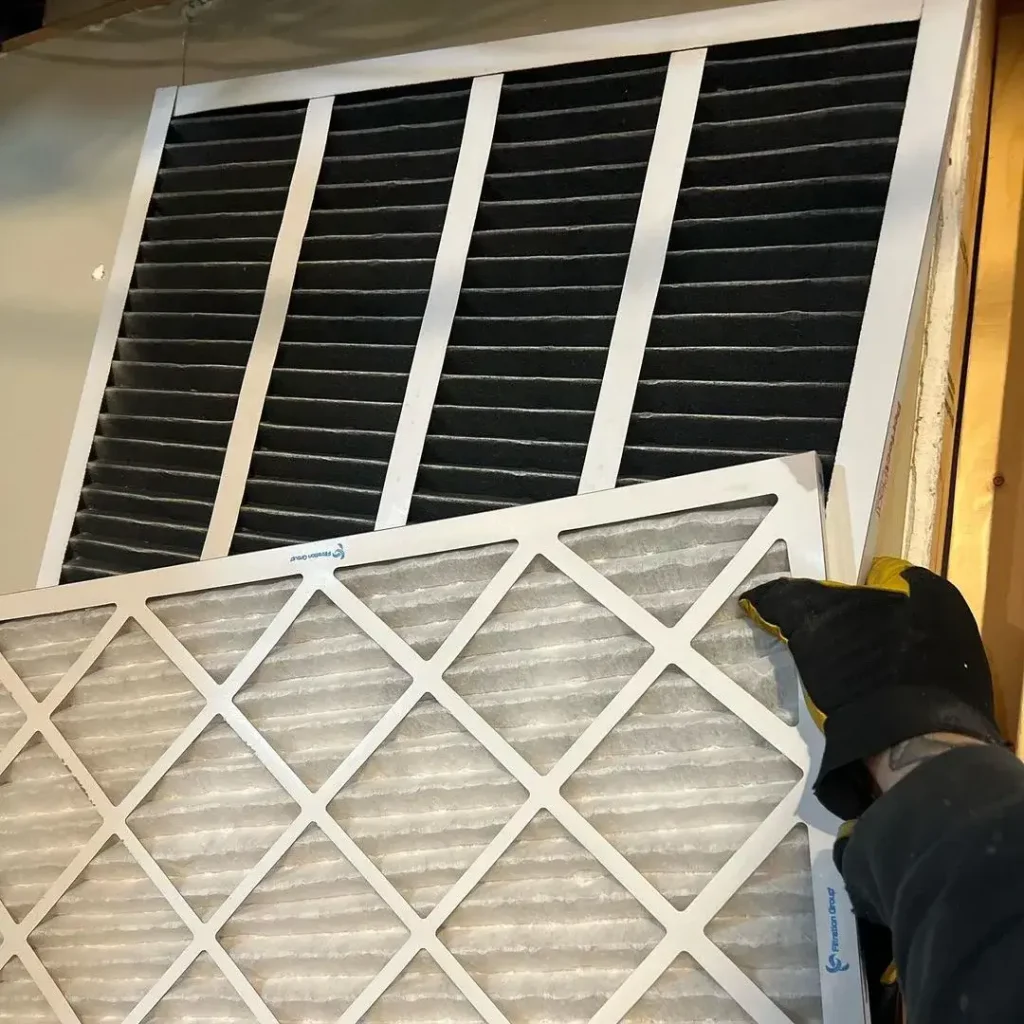The Different Types of Furnace Filters And How To Clean Them
Furnace filters are an important part of your furnace because they help improve the efficiency and quality of your home’s heating and cooling system. That’s why it’s so important to clean them regularly and replace them when they get dirty. Check out this guide to find out more about how to clean a furnace filter properly.
According to the World Health Organization (WHO), household air pollution caused 3.2 million deaths in 2020, including 237,000 deaths of children under 5. An HVAC air filter works to stop dust, dirt, pollen, viruses, bacteria, and contaminants from circulating throughout your home.
Furnace filters are a crucial part of your furnace’s operation. The filter within your HVAC unit removes harmful contaminants from the air and protects the system from dust and debris that can hinder operation.
This can keep the air in your home clean while reducing the cost and time spent on repair bills by filtering out particles that can cause clogs in the air ducts. If there are too many particles circulating inside your furnace, it can actually cause overheating or overworking.
That’s why maintaining them is also essential for helping to extend the life of a furnace. For best results, clean your home’s air filters once a month and replace them more often depending on the type.
The steps listed below will work for most reusable filters — but always refer to the manufacturer’s instructions to find out the best way to clean your air conditioner or furnace filter. This protects everyone’s health, extends the lifespan of your HVAC system, and improves its performance.
Types of Furnace Filters
Furnace filters are an essential part of your HVAC system, responsible for maintaining indoor air quality and keeping your equipment running smoothly.
Two popular types of furnace filters are disposable and washable filters. Each type of filter has its own advantages and disadvantages, so it’s important to consider your specific needs when choosing between them.
1. Disposable Filters
Disposable furnace filters are a cost-effective and convenient way to maintain good indoor air quality and keep HVAC systems running smoothly.
The main benefit of disposable furnace filters is that they are designed to be replaced on a regular basis, typically every one to three months, depending on usage and the level of indoor air pollution.
This ensures that the HVAC system is always working at peak efficiency and that the air being circulated throughout the home is clean and healthy. Disposable furnace filters come in a range of sizes to fit different types of HVAC systems, and they are typically easy to install and replace.
Types Of Disposable Furnace Filters
Disposable furnace filters are a popular and affordable option, but with so many types available, it can be overwhelming to choose the right one for your home.
Let us now explore the different types of disposable furnace filters and help you make an informed decision about which one is best for your needs. Here are the types of disposable filters:
1. Pleated filters
Pleated filters have more filtering surface area because of their pleated design. Typically, they are constructed of tightly woven cotton or polyester. While a pleated filter appears more solid, a fiberglass filter has a weave that is sufficiently loose to allow you to see through it.
This type of filter has Minimum Efficiency Reporting Values (MERV) ratings between eight and thirteen, which is the highest rating that can be achieved for residential HVAC systems. They are therefore the best options for systems that can handle the job.
2. Synthetic Or Fiberglass Furnace Filter
A Fiberglass Furnace filter is disposable and one of the most inexpensive options for air filtration on the market. Filters made of fiberglass or synthetic materials prevent dust and dirt from adhering to the system’s motors, heat exchangers, and other parts.
While you won’t pay much for Fiberglass Furnace Filter, you won’t enjoy high MERV ratings either. These filters keep the components of your furnace clean by collecting larger particles.
It also allows for maximum airflow in your system, but it does not filter out harmful contaminants that can cause long-term health problems. This means that, while the fibers will catch the big particles, they’ll allow smaller ones to pass through and stay in circulation.
Furthermore, a Fiberglass Furnace Filter generally has a 30-day lifespan, even without a commensurately high MERV. However, if you don’t have to worry about respiratory sensitivities and like to keep your HVAC system simple, a fiberglass filter can slot right in.
3. Polyester Filters
Polyester filters are made of high-quality materials and come in medium sizes. These filters capture between 80% and 95% of large particles. Polyester filters are four times more expensive than fiberglass or synthetic filters, but they provide better protection against pollutants that may cause health problems. These polyester and cotton filters will catch fine particles like dust and allergens but cannot be cleaned like a disposable filter.
4. Carbon Furnace Filter
Carbon filters use carbon or charcoal to filter the air which makes them highly efficient at trapping gases in the air. If you’re choosing a carbon filter, make sure it has a high carbon content and is activated. Carbon molecules become more efficient after being subjected to an activation process that increases their surface area.
Moreover, take into account thickness. More particles will be captured by a thicker carbon filter than a thinner one. The air becomes cleaner as a result of spending more time in a thicker filter.
Maintaining a clean air filter will ensure that you receive the best possible indoor air quality. By replacing them on a regular basis, you can keep your air clean and healthy against allergens and other types of bacteria that can harm your lungs.
Furthermore, new replacements keep your HVAC system running properly by extending its lifespan and lowering your utility bills by keeping it properly maintained. You should inspect them monthly to see if they need to be cleaned or replaced.
How Do You Clean A Disposable Furnace Filter?
The only way a homeowner can clean a disposable filter is to remove it from the furnace and vacuum up larger debris. In fact, soaking a disposable filter in water and washing it with a hose would ruin the filter because they aren’t designed to withstand such abuse.
Disposable furnace filters should be replaced every three months. It may also be necessary to replace the filter every few weeks or more frequently depending on the quality of the air inside and outside your house, and the type of filter.
2. Washable Furnace Filter
A washable furnace filter, also known as a reusable or permanent filter, is a type of HVAC (heating, ventilation, and air conditioning) filter that can be cleaned and reused instead of being replaced.
These filters are typically made of a durable material such as aluminum or mesh, and they are designed to capture airborne particles and pollutants as air flows through the furnace or air conditioning system.
They are commonly used in residential and commercial HVAC systems to improve indoor air quality and to protect the equipment from damage caused by dust and debris.
The primary benefit of a washable furnace filter is that it can be cleaned and reused multiple times, which can save money and reduce waste compared to disposable filters that need to be replaced frequently.
However, it is important to note that washable filters may require more frequent cleaning than disposable filters to maintain their effectiveness.
It is also important to follow the manufacturer’s instructions for cleaning and maintenance to ensure the filter is properly cleaned and maintained.
Types of Washable Furnace Filters
While Washable Furnace Filter is slightly more expensive, they will save you money in the long run because they are easily removed and cleaned. Some of these filters can last for years if cleaned and maintained on a regular basis. Here are some types of Washable Furnace Filter:
1. Electronic Furnace Filters
Electronic Filters use a high-voltage electric charge that attaches to the incoming air particles. These charged particles are attracted to the metal collecting plates. Most Electronic Filters will also have meshed pre-filters that catch larger particles.
These filters will need to be cleaned regularly. Fine dust and allergen particles are captured by the primary electronic air cleaner cells. Make sure to take out the pre-filters for cleaning. If the air cleaner also includes post-filters, you should just replace them rather than clean them.
Post-filters are not made to be cleaned like pre-filters are. It will be installed on the inside of the electronic air cleaner. Electronic air cleaners can be cleaned with specialized detergents, but you can also use any mild household degreaser.
Make sure to dry the electronic air cleaner and pre-filters for at least 30 minutes before reinstalling them. The air cleaner’s indicator light should be on when the HVAC system kicks on.
We advise pressing the test button at the bottom to make some electrical pops, which indicates that it is functioning properly. If your HVAC system is used frequently, electronic air cleaners should be cleaned more frequently than every six months.
2. Electrostatic Air Filters
When maintaining an electrostatic filter, you must also wash it with soap and water and let it dry completely before reinstalling it. Mold and mildew can grow if you install them before it has completely dried. For electrostatic filters, cleaning them every 30-90 days is recommended.
It is a good idea to also at least inspect the filter every 30 days to see how dirty it is. Electrostatic filters filter air by using fibers or electrostatic charge to attract airborne particles and dust.
3. HEPA Furnace Filters
HEPA filters are excellent at removing contaminants, making them the best choice, especially for those who have respiratory problems. In some homes, HEPA filters are integrated into the central air system, keeping the air close to the furnace clean even though they are typically used in separate air purifiers.
While passing through the filter, cellular organisms are denatured and neutralized by ultraviolet light, which is used by some HEPA filters to kill live pathogens.
Others increase their effectiveness even further by using activated carbon. Up to 99% of impurities larger than 0.3 microns are captured by high-efficiency particulate air, or HEPA, filters.
A washable filter may not provide adequate filtration for your home if you or someone in your household suffers from environmental allergies or is generally sensitive to common household irritants. The MERV for the majority of reusable filters is only four.
They are effective against pollen, dust mites, and loose carpet fibers but allow mold spores, cooking byproducts, and hair sprays to pass through. But if you can properly care for your filter and don’t mind a lower MERV rating, a washable filter may be the better option. You’ll save money and energy by using one.
How Do You Clean A Washable Furnace Filter?
To clean a Washable Furnace Filter, vacuum it thoroughly with a brush. If you have pets or a smoker in the house, you should spray the filter with a light detergent. A washable Furnace Filter is cleaned with specialized sprays or you can also simply make a mild solution of dishwasher detergent and water.
Saturate the Washable Furnace Filter with detergent and set it aside for a minute. If the filter has an arrow on it, spray the filter in the opposite direction. Clean the filter thoroughly with the garden hose, and you should see a lot of dust and debris fall out. Place the filter in a clean location and allow it to dry for at least 10-15 minutes.
Conclusion:
The furnace filter is arguably the most important component in your home’s air quality. They keep it healthy by absorbing dirt, soot, and other harmful particles. Always follow the manufacturer’s instructions on your HVAC unit when cleaning it.
Changing your filter on a regular basis will keep your furnace running smoothly. Regular maintenance will keep your furnace’s filter clean and extend its lifespan.
You’ll also have great indoor air quality and low energy bills. That’s why Clean Air Pro is here! We offer free estimates for your furnace cleaning. Call us to schedule your appointment now! For more information, visit us on Facebook, Twitter and Instagram!


